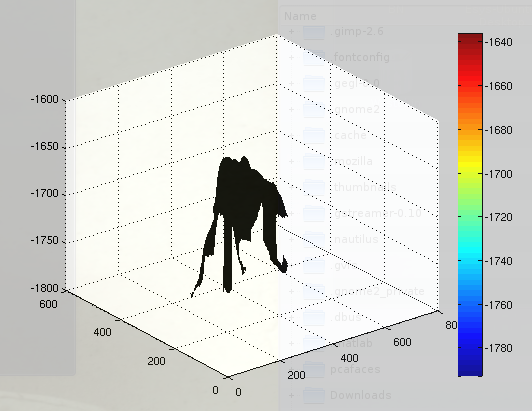 PDF version of this entire document
PDF version of this entire document
Any datasets which already have reliable refinements/enhancements such as removal of holes/spikes and smoothing would have been best to work with. No matter how many cycles are spent parsing through the data we have from the FRGC11, there is usually some pesky hole or spike left in some images. The noise interferes with parts of the application such as PCA, distance/density checks, and it sometimes seems like a never-ending make-or-break task because when the code is tweaked to perfect the processing of one image, there will usually be another (unseen) special case among the set on which the algorithm falls short. For the framework to be completely automatic it needs to adapt to many different situation without any user intervention, which is exceedingly hard. It's nearly impossible to tell apart erroneous spikes from real ones, without false positives. To start adopting anatomy-specific checks would be computationally expensive (e.g. identifying eyebrows based on local statistics).

|
Roy Schestowitz 2012-01-08